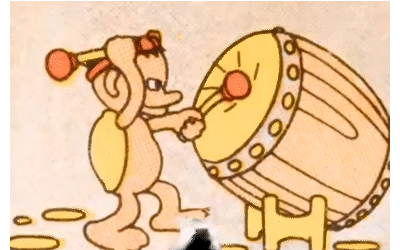In 2023, we scanned 85 paper films from several Japanese museums and collectors. We will return to Japan in 2024 to scan additional films. Follow our Twitter account (@kamifirumu) to see highlights of preserved films as we process them.
A special note on our approach. Our goal is not to restore the films to a pristine quality but to digitally preserve the films in their current condition. We believe a film’s wear and tear tells a story as important as the film’s content and style. As such, you will see defects, dirt, torn perforations, ink spills, scribbles, and even fingerprints! The paper films were scanned at 6K HDR (“high dynamic range”). Then, we color grade and stabilize a work copy of the 6K master to match the look of the paper film’s current condition.
In terms of speed, the films were originally shown using a hand cranked projector and thus do not have a “correct” fixed speed. In cases where there is a synchronized sound track, we time the film to match the music, sound effects, and/or narration. In cases, where there is no sound track, we present the films at about 18 – 20 frames per second. In some cases, corporate logo screens, titles, and intertitles are slowed down to provide the audience time to read (as they likely were when the films were originally projected).

